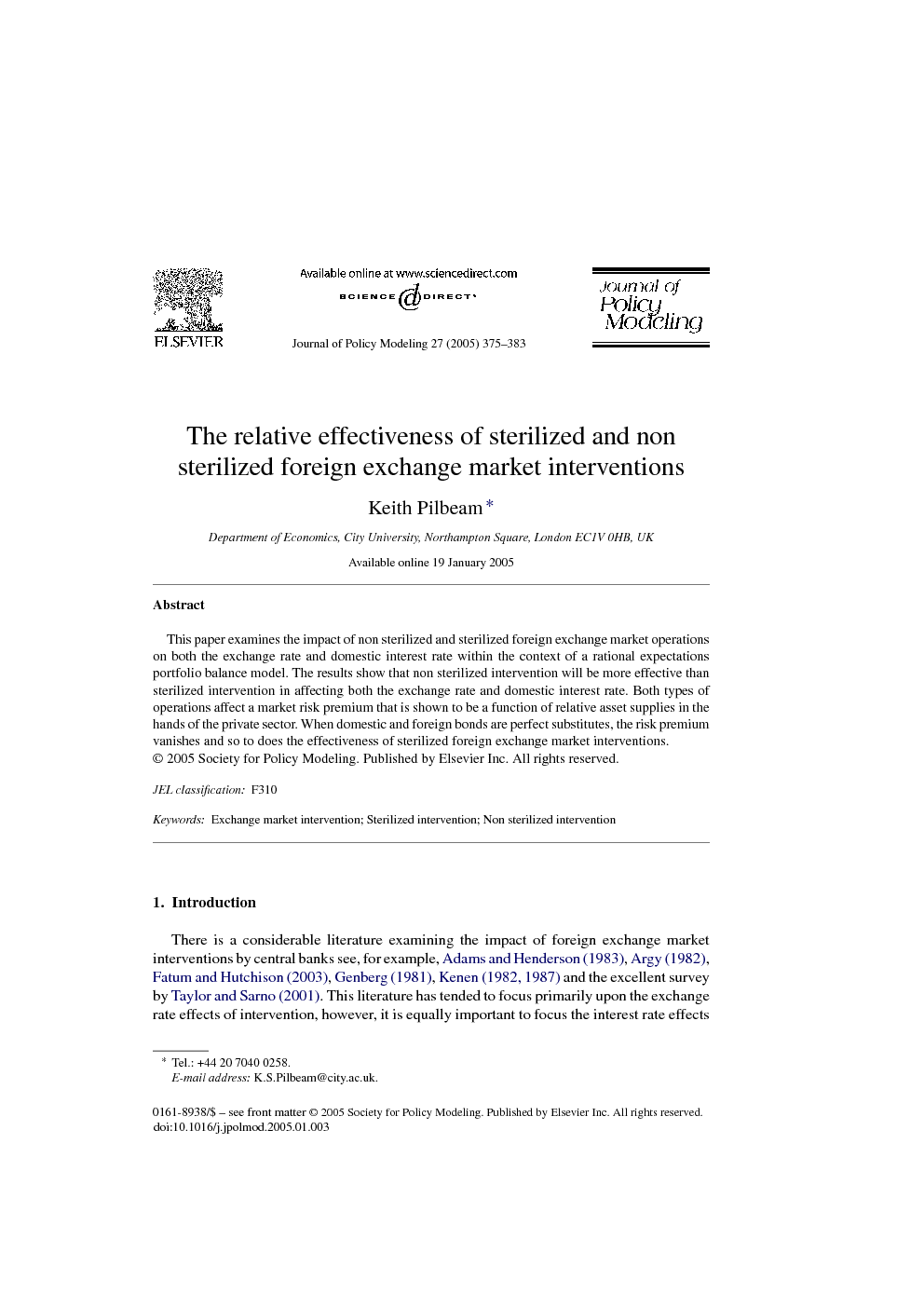ترجمه فارسی عنوان مقاله
اثربخشی نسبی مداخلات استریلیزه و غیراستریلیزه در بازار ارز خارجی
عنوان انگلیسی
The relative effectiveness of sterilized and non sterilized foreign exchange market interventions
| کد مقاله | سال انتشار | تعداد صفحات مقاله انگلیسی |
|---|---|---|
| 14957 | 2005 | 9 صفحه PDF |
منبع

Publisher : Elsevier - Science Direct (الزویر - ساینس دایرکت)
Journal : Journal of Policy Modeling, Volume 27, Issue 3, April 2005, Pages 375–383
ترجمه کلمات کلیدی
مداخله در بازار ارز - مداخله استریل - مداخله غیر استریل
کلمات کلیدی انگلیسی
Exchange market intervention, Sterilized intervention, Non sterilized intervention,

